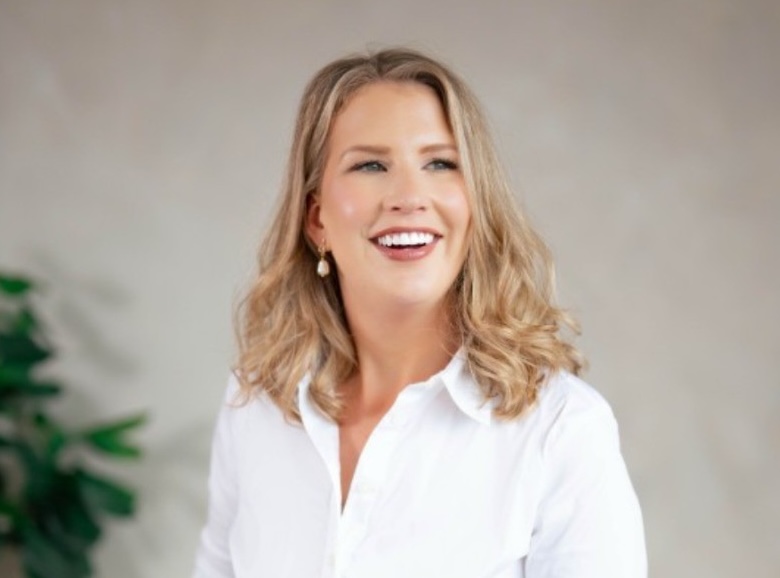Establishing yourself as an expert at what you do is the best way to shift the tides of leads so that they’re coming into you rather than you having to chase them down. One of the best ways to do this in today’s (ever-shrinking) attention economy is to build your reputation as a thought leader on LinkedIn.
Everyone has to promote themselves. Not everyone likes it and it doesn’t always come naturally– but we’ve broken it down into seven simple steps that will keep you top-of-mind in your networks and the go-to person for your area of expertise.
Let’s get into it.
#1: Nail down your audience
Before you even start crafting content, you need to know who you’re talking to. Drill down to identify your ideal customer profile (ICP): industry, role(s), company size or stage, and any other factor that can help you tailor what you have to say.
Who are the decision-makers that you need to convince? What are the specific problems they’re trying to solve and how are you uniquely equipped to solve them as their fractional executive? Once you have that hammered out, you can craft a content strategy to serve that audience: your ICP.
Everything you create from that point should answer the question “Who could read this post and have it really resonate with them”? That’s who you’re writing to.
#2: Refine your voice
Once you know who you’re writing to, decide how you want to talk to them. Honing your voice and tone takes time and it can and should evolve– but thinking through a few key things will set you up for success.
The first rule is authenticity. The point isn’t to write clickbait content that grabs attention but ultimately doesn’t deliver value. You want to tell a story that highlights what you’ve learned from your experience, painting you as an expert who can solve problems.
Think about how you can share your own professional experiences in a way that highlights your expertise without being overtly salesy. Plant seeds in your audience’s mind, not hit them with a sales battering ram. By sharing valuable, relevant content over time your audience will come to think of you as the person they should turn to when they have a question about your area of expertise– and that can lead to a project.
#3: Build a content process
With your audience identified and your voice honed, build out a sustainable process for creating content. Set aside dedicated time to come up with ideas. Without scheduling this in your calendar, it’s easy to let it perpetually slide to the back of the to-do list.
During your scheduled time, brainstorm ideas you can write about from a thought leadership perspective. Draw from your own experience, both professional and personal where relevant. Share your thoughts on articles you’ve read or use screenshots of posts from other social networks as writing prompts. Write some sample drafts, always highlighting the relevant experience you have that makes you an expert, and note specifics: this post got over 700k impressions and resulted in 14 inbound leads.
Be sure as part of your content process that you set aside time to engage with content from others. Prioritize responding thoughtfully to comments and posts you’re tagged in, but also take time to scroll your feed, commenting and responding to other thought leaders as well as your connections.
Thoughtful comments can build, strengthen, and maintain relationships. They also keep you top-of-mind in your network as they see more of your activity sprinkled in their feed aside from just the posts you write.
#4: Don’t be afraid to write a bad post
You have to write a “bad” post to write a good one. Posts that don’t perform as well just don’t get seen by as many of your followers or connections, so you don’t have much to lose. You stand to lose a lot more by not posting since posts that do resonate have the potential for big returns in building your both audience and your prospects.
“Bad posts” also give you more practice refining your voice and figuring out what it is that resonates with your audience. No time spent honing a craft is wasted when it helps you get better at it.
#5: Learn from the best
You don’t have to start from scratch with all of this either. Use a tool like Taplio or simply search LinkedIn to see what people you like have written about, what their writing style is like, and what has worked for them over time. What elements of their success make sense for you to experiment with?
You don’t want to copy anyone exactly; you want to use their approach for inspiration. Try similar tactics in the voice you’ve worked to develop for yourself.
#6: Optimize your profile
All the expertise in the world doesn’t add up to much if potential clients can’t easily get ahold of you. Your profile needs to not only make it very clear who you are and what you do, but also how anyone can get in touch with you. Respond to comments, DMs, and other outreach in a reasonable amount of time.
Ideally, you want to provide several options for anyone who wants to contact you. The more options you provide the more places you need to be sure you’re keeping up with, but prospects are more likely to reach out in the place they feel the most comfortable. That could be booking a discovery call through your Calendly link or backchanneling through your social media profiles.
#7: Consistency is key
Through the shifting tides of social media, one thing has remained true: the key to growing and maintaining an audience is consistency. Choose a cadence that is sustainable for you. It’s better to start posting once a week and build up from there than to post every day for a month and then never post again.
Remember not to be afraid of “bad” posts. When a post doesn’t perform well, decide if you could revise it and repost it at a better time or on a different day to see how it performs then. Sometimes it’s a matter of timing or getting eclipsed by a major news event. “Bad” posts disappear into the abyss of the algorithm while a good post can pay dividends in engagement and leads.
Final thoughts
Building an engaged audience for LinkedIn thought leadership takes time and effort, but the work you put in will pay off in future connections and opportunities. Always keep in mind that you’re writing to tell the story of your expertise and how it can solve particular problems for your target audience.
Over time, they’ll come to think of you as the expert they should turn to if they have questions about your specific work as an independent consultant, or fractional executive. If you find a way to talk about your expertise with your own flair, you’ll stand out in busy feeds and keep sparking smart conversations.
This value-added article was written by Mylance. Mylance specializes in identifying the highest quality, most curated leads for your fractional business. We use 5 different criteria to identify companies and decision-makers who are likely to need your expertise:
- Matches your niche / unique expertise.
- Likely to have the budget.
- Gaps on their team in your function.
- Are fractional-friendly.
- Have warm connections from your network.
To apply for access, submit an application and we'll evaluate your fit for the service. If you’re not ready for lead gen, we also have a free, vetted community for top fractional talent that includes workshops, a rates database, networking, and a lot of free resources to support your fractional business.

Written by:
From Uber to Fractional COO to Mylance founder, I've run my own $25k / mo consulting business, and now put my business development strategy into a service that takes it all off your plate, and powers your business





